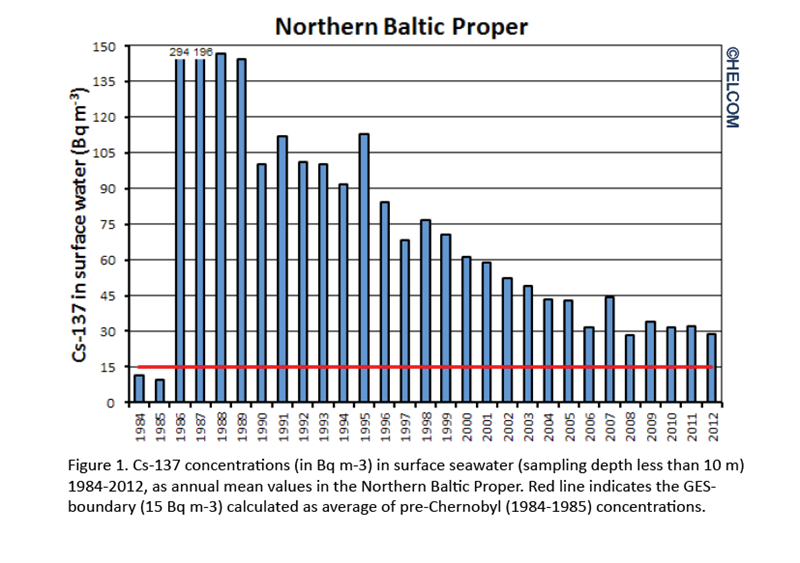Thirty years of unbroken monitoring on radioactivity in the Baltic Sea

Despite a general decreasing trend of concentrations of radionuclides, the Baltic Sea still is one of the most polluted sea areas as regards radioactive contamination. Radioactive substances in the Baltic Sea have been systematically monitored since the year 1984, and the credit mainly goes to the HELCOM MORS Expert Group finishing its 30th meeting today in Oulu, Finland.
The several annual samples on radioactivity are a responsibility of all the coastal countries, analysed and reported to the Expert Group through three decades. Up to this date, the openly accessible environmental database contains over 3,600 biota samples, over 8,000 seawater samples and 11,000 sediment samples analysed for various radionuclides. The reports on aquatic and airborne discharges of radionuclides from nuclear power plants and reprocessing plants cover discharge data starting from the year 1952, also freely available online.
In the Meeting, the Expert Group on Monitoring of Radioactive Substances in the Baltic Sea (MORS EG) discussed the next thematic assessment of long-term changes in Baltic Sea radioactivity 2011–2015, with delivery now scheduled at the end of 2016 as this will match the purposes of the holistic Baltic-wide assessment in 2018.
Further, the meeting made final check-ups for the HELCOM core indicator “Radioactive substances: Caesium-137 in fish and surface waters”, before final adoption in June. Moreover, the group reviewed the latest scientific reports provided by the HELCOM member states and International Atomic Energy Agency (IAEA), as well as updated as necessary the shared Guidelines for monitoring of radioactive substances.
Radioactive substances occur naturally in the environment, but also due to nuclear weapon tests in 1950–80, Chernobyl nuclear power plant accident in 1986, as well as routine operations of nuclear power plants and research reactors. The latest HELCOM thematic assessment of long-term changes in radioactivity in the Baltic Sea was released in 2013.
The region's first joint efforts concerning radioactivity started in early 1980s by a project under International Atomic Energy Agency (IAEA), while MORS Expert Group had its first meeting just before the Chernobyl accident – in 1986.
Meeting site. All documents will be public soon after the Meeting.
* * *
Note for editors
The Baltic Marine Environment Protection Commission, usually referred to as HELCOM, is an intergovernmental organization of the nine Baltic Sea coastal countries and the European Union working to protect the marine environment of the Baltic Sea from all sources of pollution and to ensure safety of navigation in the region. Since 1974, HELCOM has been the governing body of the ‘Convention on the Protection of the Marine Environment of the Baltic Sea Area’, more commonly known as the Helsinki Convention.
* * *
For more information, please contact:
Tarja K. Ikäheimonen
Chair of HELCOM MORS Expert Group
Environmental Radiation Surveillance and Emergency Preparedness
STUK - Radiation and Nuclear Safety Authority
Tel. +358 400 811 254
E-mail: Tarja.Ikaheimonen(at)stuk.fi
Johanna Laurila
Information Secretary
HELCOM
Tel: +358 40 523 8988
E-mail: johanna.laurila(at)helcom.fi


